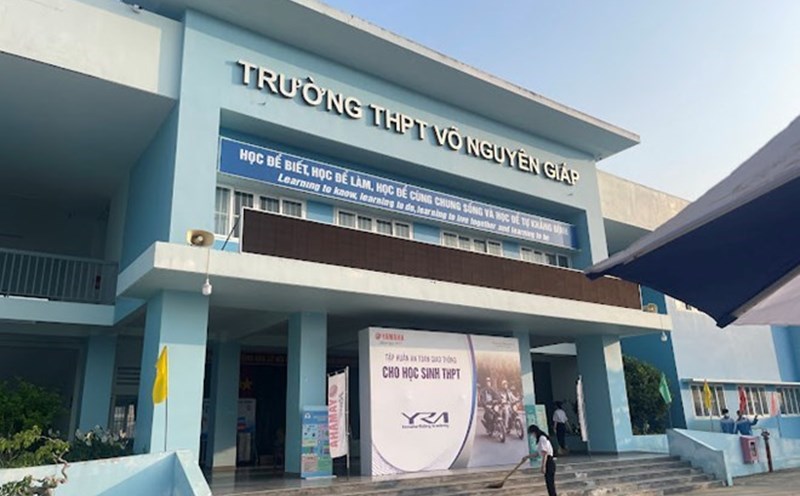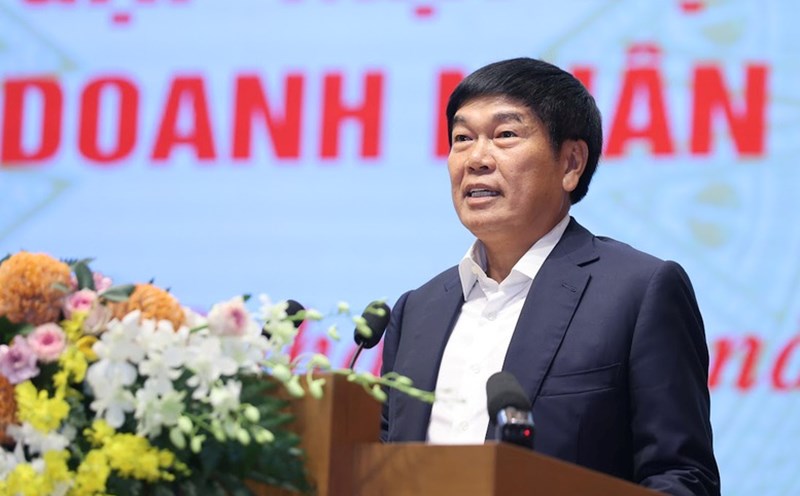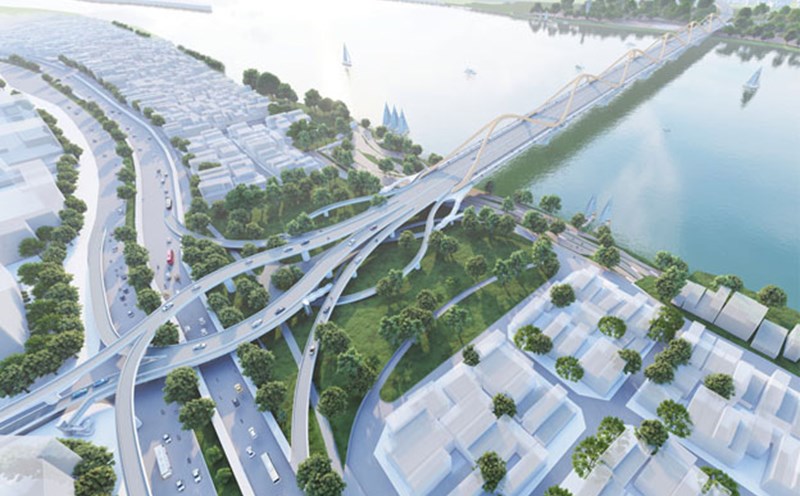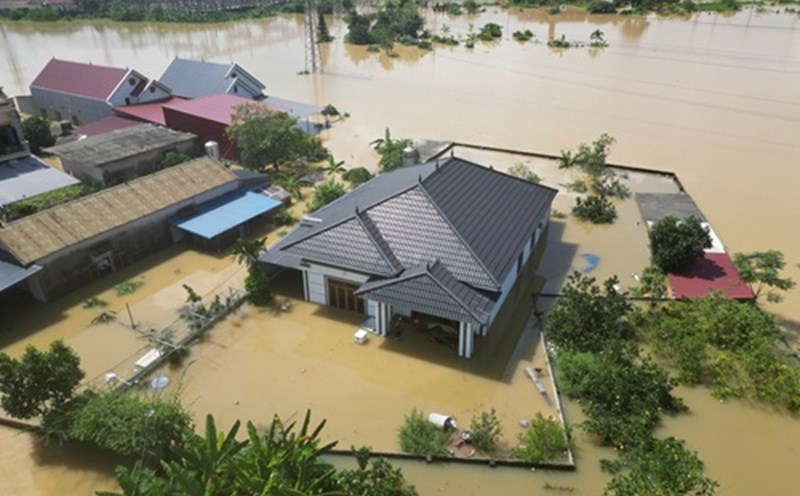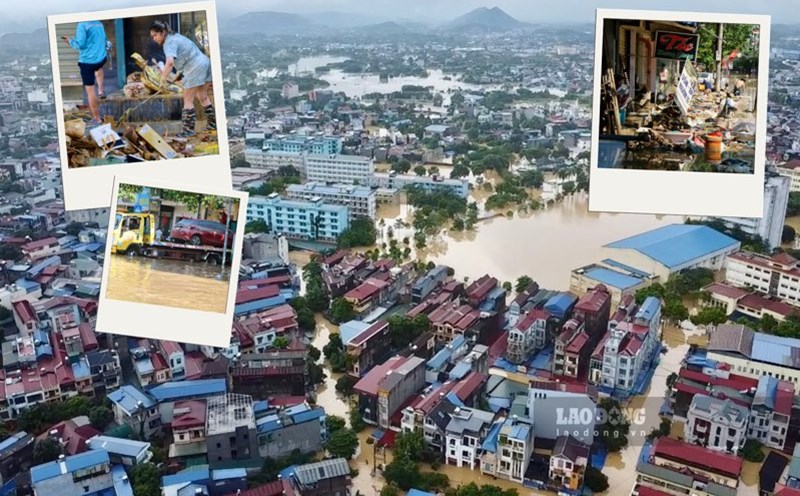On the afternoon of October 9, the Hanoi People's Committee held a groundbreaking ceremony for the Tran Hung Dao Bridge Construction Investment Project.
This is one of the city's 8 key projects started on the occasion of the 71st anniversary of the Liberation of the Capital (October 10, 1954 - October 10, 2025), welcoming the 18th Hanoi City Party Congress, towards the 14th National Party Congress.
The project has a total investment of more than VND 16,967 billion, starting at the Tran Hung Dao - Tran Thanh Tong intersection; ending at Nguyen Son street with a total length of about 4.18km.
In terms of investment scale, the main bridge over the Red River is 870m long, including 6 spans, with a cross-section of 43m, ensuring 6 lanes for motor vehicles, 2 lanes for bicycles and 2 lanes for walking.
The approach roads at both ends of the bridge have a cross-section of 25.5 - 30m with a total length of about 1.42km. The project will invest in the complete construction of 3 intersections, including: Different intersection with Tran Khanh Du and Nguyen Khoi streets; intersection with the Red left dike road (Long Bien - Xuan Quan road); level intersection with Nguyen Son street.
The project is expected to be completed in 2027.
According to Vice Chairman of Hanoi People's Committee Duong Duc Tuan, Tran Hung Dao Bridge is one of 18 road bridges across the Red River, part of the Capital Transport Development Plan.
The investment in the construction of Tran Hung Dao Bridge plays an important role, promoting the urbanization of the area, creating a premise for implementing the policy of population dispersion and reducing traffic pressure in the central urban area, connecting main roads along both banks of the Red River, developing modern urban space...
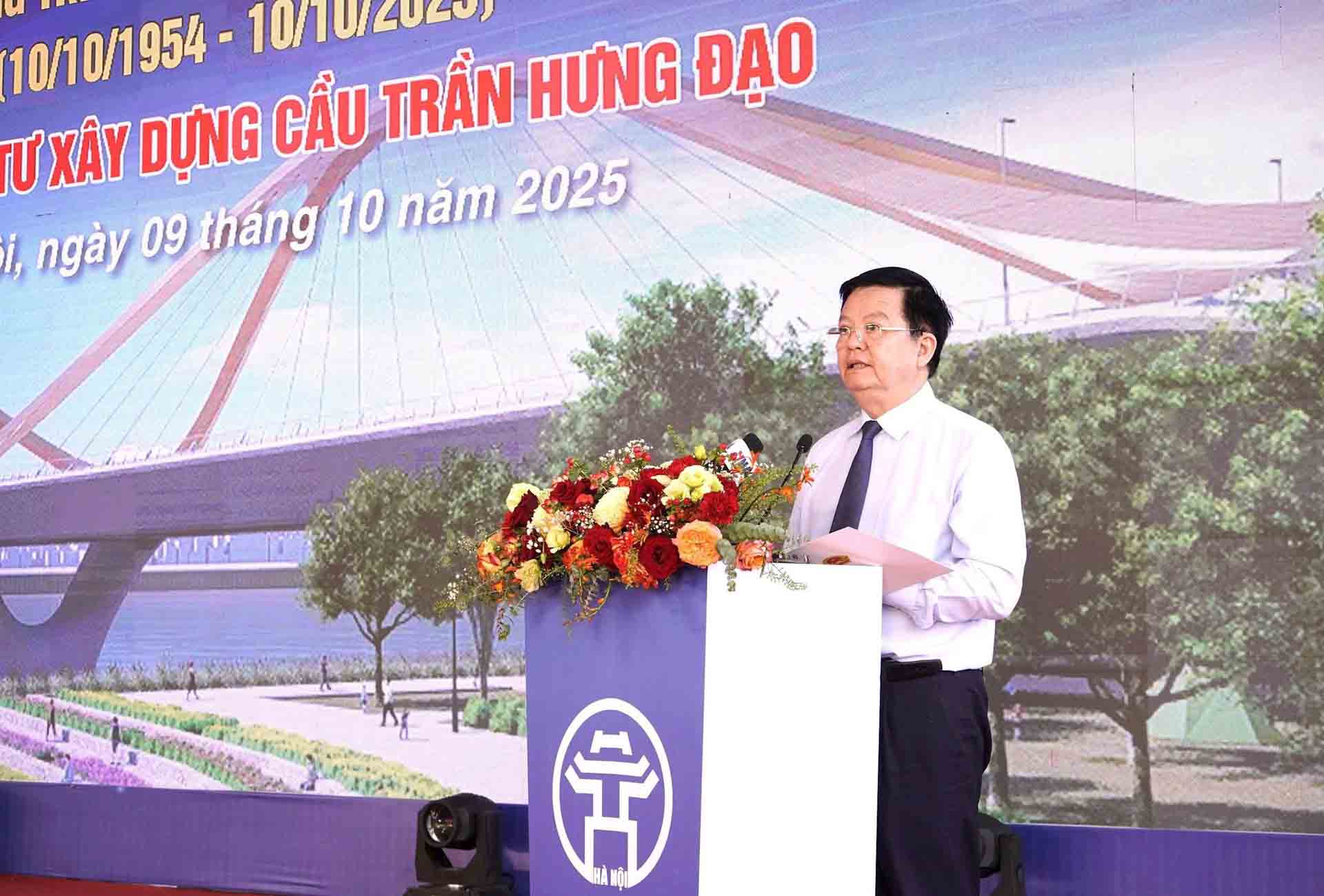
Speaking at the ceremony, Deputy Prime Minister Mai Van Chinh affirmed that developing synchronous infrastructure is one of the three strategic breakthroughs identified by the 13th National Party Congress.
In recent times, the Party Central Committee, the National Assembly, and the Government have focused and prioritized large resources to invest in developing key national transport infrastructure such as: expressways, international airports, urban railways, seaports, etc., creating an important driving force to contribute to socio-economic development, opening up new development space and significantly changing the face of the country.
Commending and appreciating the efforts and sense of responsibility of Hanoi city, Deputy Prime Minister Mai Van Chinh suggested that the construction of the project must ensure quality, progress, technique, aesthetics, environmental sanitation, landscape, labor safety; ensure investment efficiency and harmonize the interests of the state, people, businesses, etc.
Hanoi City promotes experience in implementing key national projects, confident, self-reliant, self-reliant, decentralized, and delegated strongly; removing difficulties, cutting cumbersome administrative procedures; assigning and assigning tasks to ensure "6 clear"; competing patriotically, enthusiastically working for the interests of the nation, people, for the development of the country and Hanoi, striving to complete the project earlier than the set goals.



